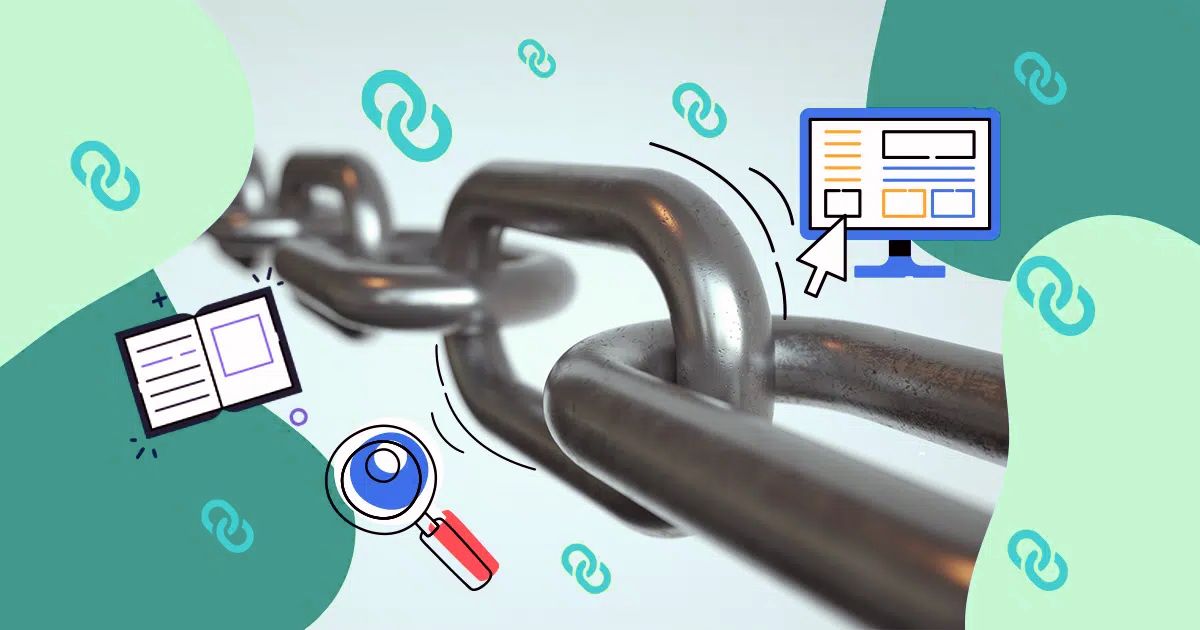
96.5% of the 14 billion indexed web pages of Ahrefs receive no traffic from Google, and 1.94% of it barely scrapes by with only 1-10 visits/month. If you are looking to start a solid link building strategy, you are in the right place.
After all, simply publishing good content isn’t going to land you with quality links. And so, here is all you need to know about link building for SEO and what tools will help you land those super high-quality links. In this article, we’ll share our top-notch link-building strategies without getting bogged down by shady tactics like keyword stuffing and spamming.
Ready? Let’s hop in.
Link Building: Explained In Simple Terms
Link building is the process of getting other relevant websites to link to your site. These links are called “backlinks” that help search engines find and index your pages quicker.
However, not all backlinks are equal. Links from authoritative and reputable websites carry more weight than those from less popular sites. As search engines look at how reputable the linking website is, a few high-quality backlinks are better than a bunch of low-quality ones.
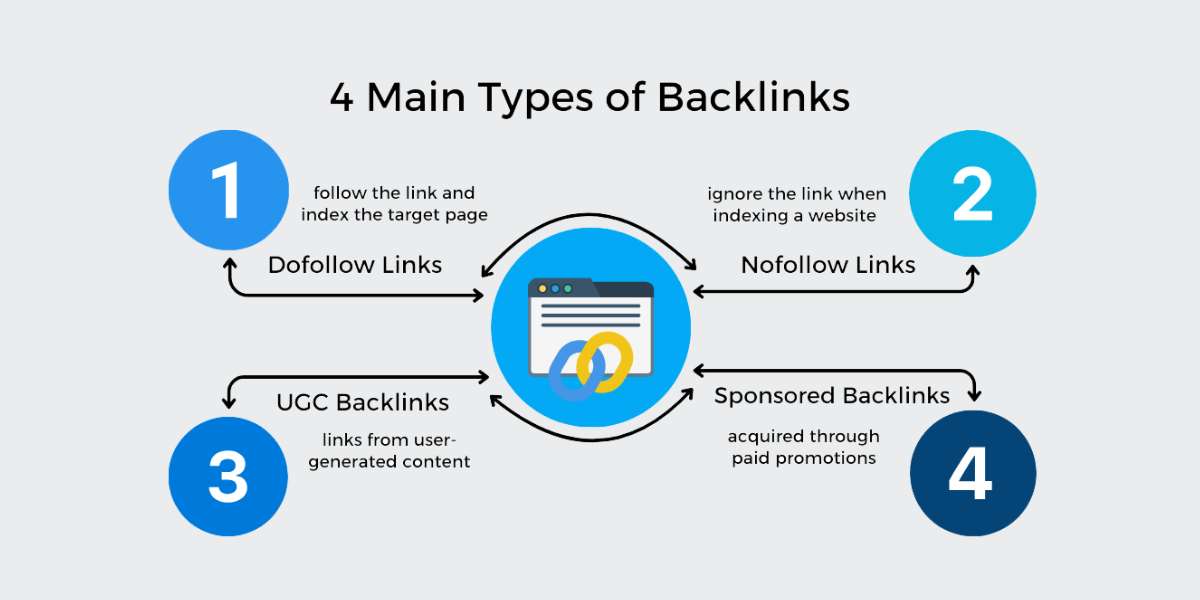
4 main types of backlinks
To understand the 4 main types of backlinks, it’s important to pinpoint what makes a good (or bad) link. That way, you can use the right types of backlinks for your targeted SEO efforts. The four primary types of backlinks available are:
- Dofollow Links: Allows search engines to follow the link and index the target web page to improve SEO rankings.
- Nofollow Links: Instructs search engines to ignore the link when crawling and indexing a website to prevent spammy links from affecting search engine rankings.
- UGC Backlinks: Links generated from user-generated content like comments or forum posts, often marked with the rel=”ugc” attribute to indicate their origin
- Sponsored Backlinks: Links acquired through paid promotions, with the rel=”sponsored” tag to avoid penalties for SEO guidelines about link schemes. Remember, Google dislikes paid backlink schemes.
Why is link building important for SEO?
Link building directly impacts your website’s ranking and credibility. Web pages in the top Google spots have 3.8x more backlinks compared to pages ranking in positions 2-10. This means that quality link building tactics make your site more visible and attract more targeted traffic. Without strong backlinks, even great content can get lost in search results.
Take it like this: Let’s say you’re in the medical niche. When other reputable medical sites link to yours, it’s saying, “Hey, this page is worth checking out!”
As such, It makes sense that 96% of websites in the top 10 of Google search results have more than 1,000 backlinks from unique domains, with less than 1% of top-ranking sites having under 100 backlinks.
In a nutshell, the more quality backlinks you have, the better you’ll outrank competitors.
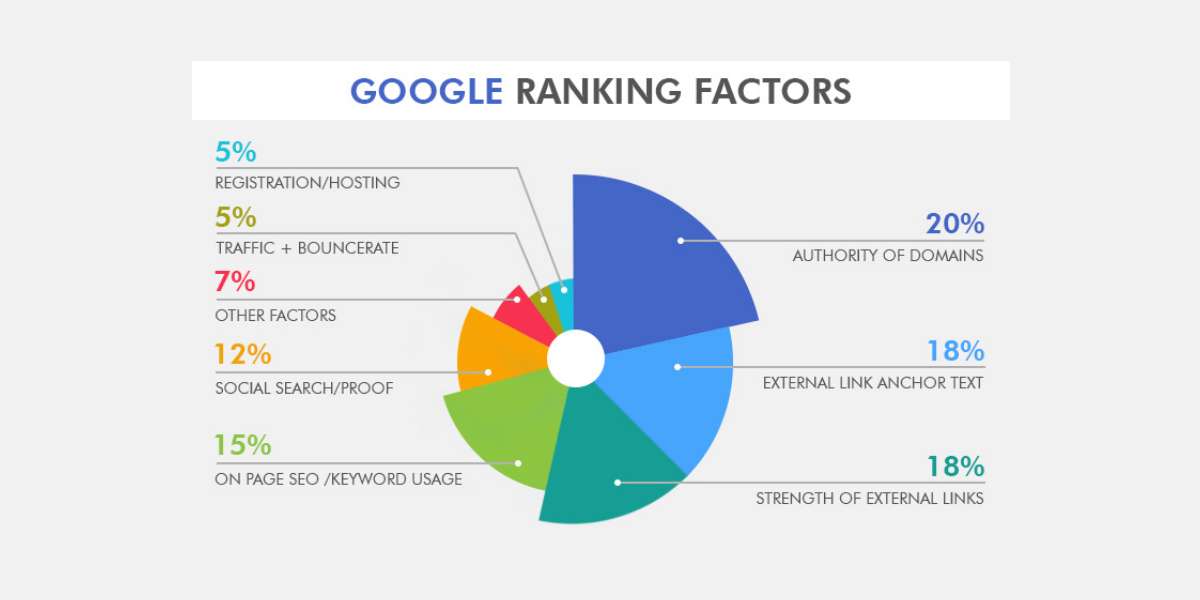
Top 10 Best Link Building Strategies: How To Get Other Sites To Link To Your Website
With so many ways to acquire backlinks for your website, we’ve broken down our shortlist of the top 10 best link building strategies you can take action with to grow your domain authority and rankings. As you read through the shortlist, find out where you might fall short and note the action points to make sure your site is worth checking out and linking back to.
The best link building strategies and tactics are:
- Increase Domain Authority
- Analyse Competitor Backlinks
- Find Broken Backlinks
- Reclaim Lost Backlinks
- Optimise Internal Links
- Build Localised Backlinks
- Use Google Search Console
- Use Skyscraper Technique
- Publish Guest Posts
- Check Trust Flow
1. Increase Your Domain & Page Authority
Check how strong your website is using Domain Authority (DA) and Page Authority (PA). These metrics determine how well your site and web pages are likely to rank in search engine results. To have a fair chance of ranking well on Google, here’s how to increase your domain authority.
Sites with a domain authority of 40-50 show a mid-authority level, while those with 60+ are considered highly authoritative. Higher page authority also ranks better for specific pages. So, aim for a 50-70 score to increase your chance of ranking your pages on Google’s first page.
Here are the key points to increase your domain and page authority scores:
- Remove spammy links
- Optimise on-page SEO
- Acquire high-quality links
- Boost page loading speed
- Create link-worthy content
- Engage in directory listings
At Digital Next, we will help you build a domain authority score of 50-70 and beyond. Our expert link-building services acquire high-quality backlinks from reputable sources to make sure your site gains the trust and authority it needs to stand out. We offer detailed backlink audits and competitor analysis then use it to tailor our strategic outreach plan for the best results.
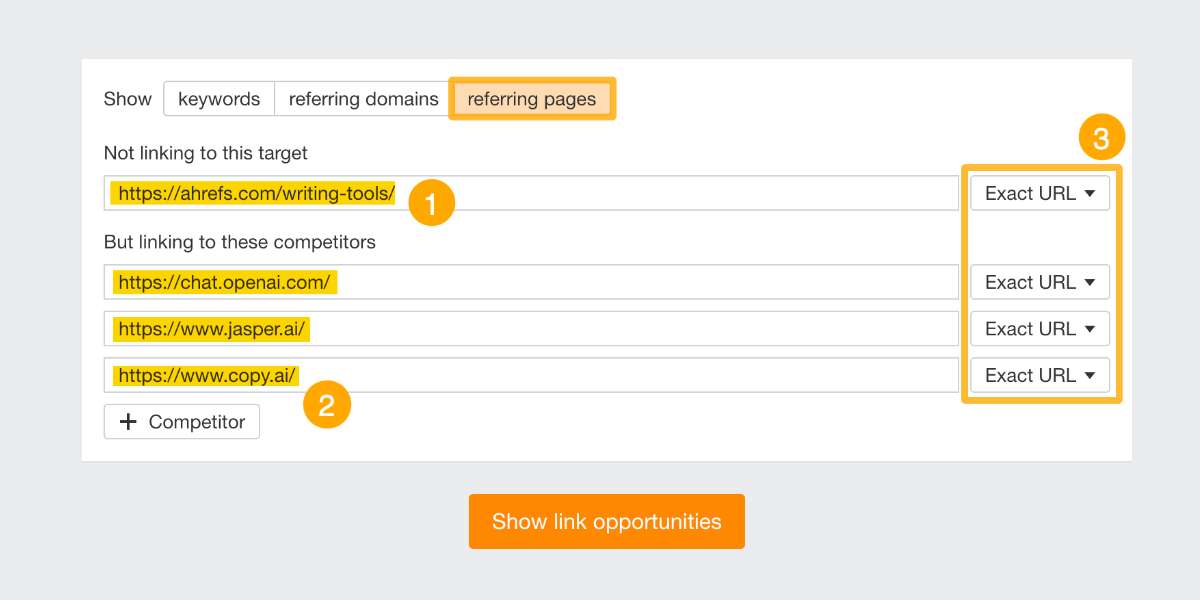
2. Acquire & Analyze Competitors’ Backlinks
Competitors’ backlinks are the links from other websites that compete with yours. See which backlinks are working well for your competitors and find out what makes them effective.
While there is no finite figure for how many backlinks you need to rank your website, consider your industry and the difficulty of the keywords you want to rank for.
To assess the quality of backlinks in your competitor analysis, here are the key factors:
- Anchor Text: It’s the clickable text in a hyperlink that gives context about the linked page.
- Relevance: Assesses how closely the linking website’s content relates to the content of the page it’s linking to.
- UGC Tags: User-generated content (UGC) tags tell if the link is from user-created content or page reviews.
- Authority: Shows the credibility and trustworthiness of the linking website, which can be seen in its domain authority or page authority.
- Link Placement: Shows the location of the backlink within the content, like in the main body, sidebar, or footer, which can affect its impact on SEO.
To simplify your competitor backlink analysis, Digital Next can help you acquire and evaluate competitors’ backlinks with ease. With 10+ years of experience across Australia and the UK, our link building campaign is carefully mapped out to tailor it to your brand and success metrics.
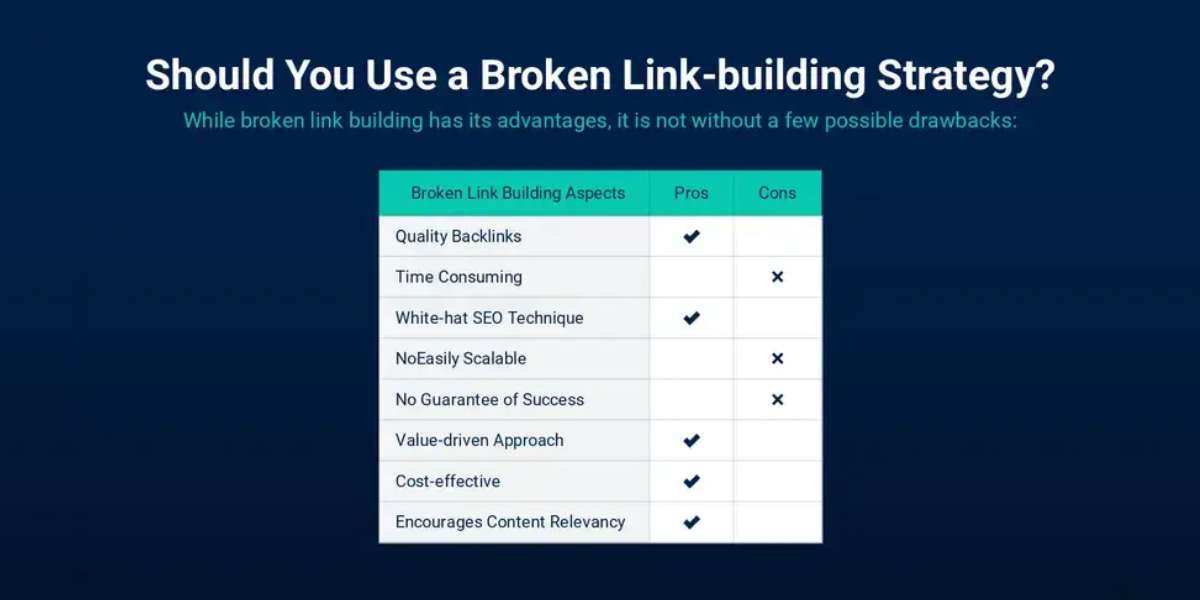
3. Find Broken Backlinks & Suggest Replacements
Your customers hate to see broken 404 links. In fact, 70% of visitors who encounter a 404 page likely leave the site immediately, which increases bounce rates. Screaming Frog is one of the tools that allow you to find broken backlinks on other websites.
Once you spot one, reach out to the site owner and suggest your content as a replacement. This way, they fix their broken link, and you get a valuable backlink that can increase your referral traffic and conversion rates.
To help you fix any broken links, follow these action points:
- Step 1: Set up 301 redirects from the broken URL to a relevant, live page on your site to maintain link equity (ranking power).
- Step 2: Replace or recreate the missing content, then have the external links point to your content instead. Use the Wayback Machine to see what the original content was like.
- Step 3: Provide alternative URLs or suggest relevant existing content on your site as a replacement for the broken link.
- Step 4: As a last resort, create a custom 404 page with branding, navigation, and a way for users to find what they need.
- Step 5: Monitor and follow up with webmasters to complete your broken link building efforts.
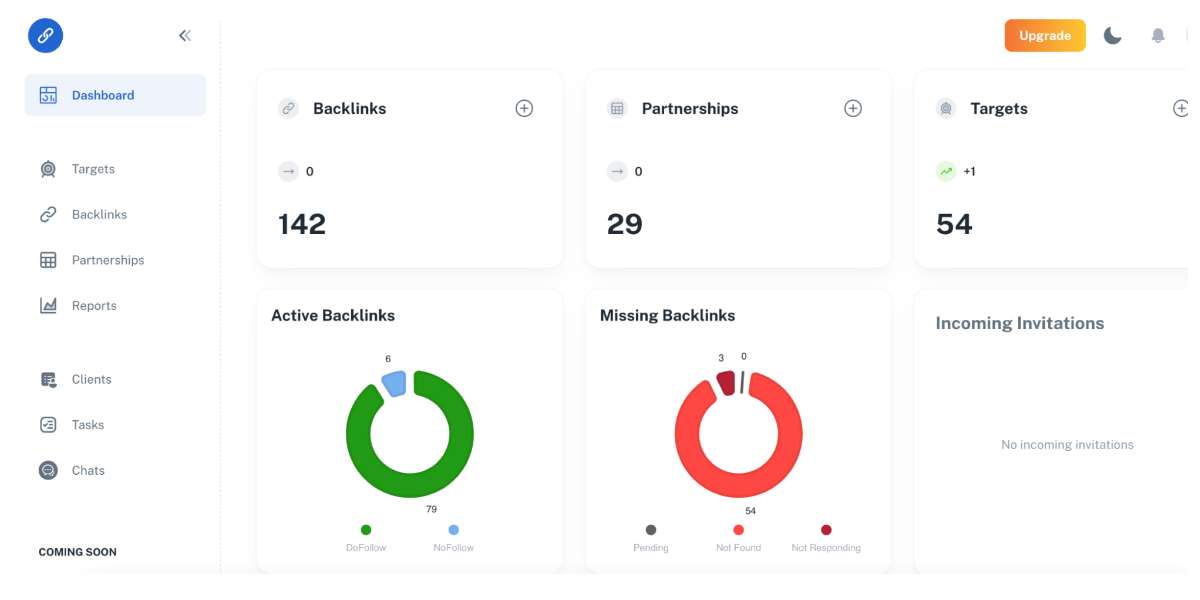
4. Reclaim Lost Backlinks
Backlinks get lost or broken over time when the linking site changes or removes the page. Reclaiming lost backlinks will restore their lost value and help maintain your site’s authority.
You can use Google Search Console, Ahrefs, or Moz to monitor your backlink profile. Look for links that have been removed, redirected, or show error codes like 404 (not found) or 410 (gone). Audit your backlinks at least once a month to catch these issues early, as even high-authority sites lose about 10% of their backlinks annually.
Prioritise which backlinks to reclaim based on their value. Consider the linking site’s domain authority and the potential traffic the link could generate. This way, you can create high-value links that make it easier to increase your backlink profile.
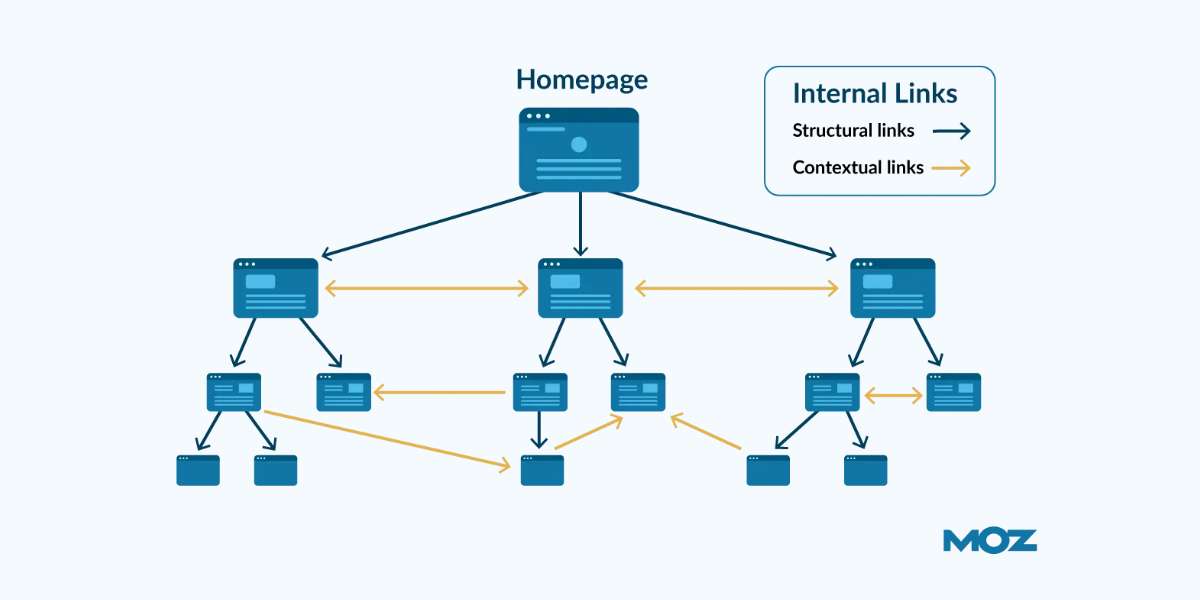
5. Optimise Internal Linking
Pages with optimised internal links receive 40% more traffic.
Internal links are like signposts that guide visitors through your site. As you link to other pages on your site, search engines can understand your content’s structure and make it easier for users to find related content easily. It also distributes “link equity” or authority from high-performing pages to others on the site that can add to your visibility.
Here are the best practices to optimise your internal linking strategy:
- Tip 1: Focus on linking to your most valuable pages, like the homepage, category pages, and high-performing content. Do not link every single page on your site.
- Tip 2: Use anchor text that clearly describes the destination page. For example, let’s say you’re in the health niche and you have a review article about a brand like MobileHelp. Use relevant keywords that reflect the target page (ex., MobileHelp features or MobileHelp reviews) to direct users to that page.
- Tip 3: Link to pages that are topically related to the content on the linking page. This helps search engines understand your site’s structure and the relationships between pages.
- Tip 4: Don’t overdo internal linking. A good target is 2-5 links/1000 words. Too many links can be distracting for users and dilute each link’s value.
- Tip 5: Organise your site into logical categories and subcategories. Link from higher-level pages to lower-level pages to make it easy for search engines to crawl your site.
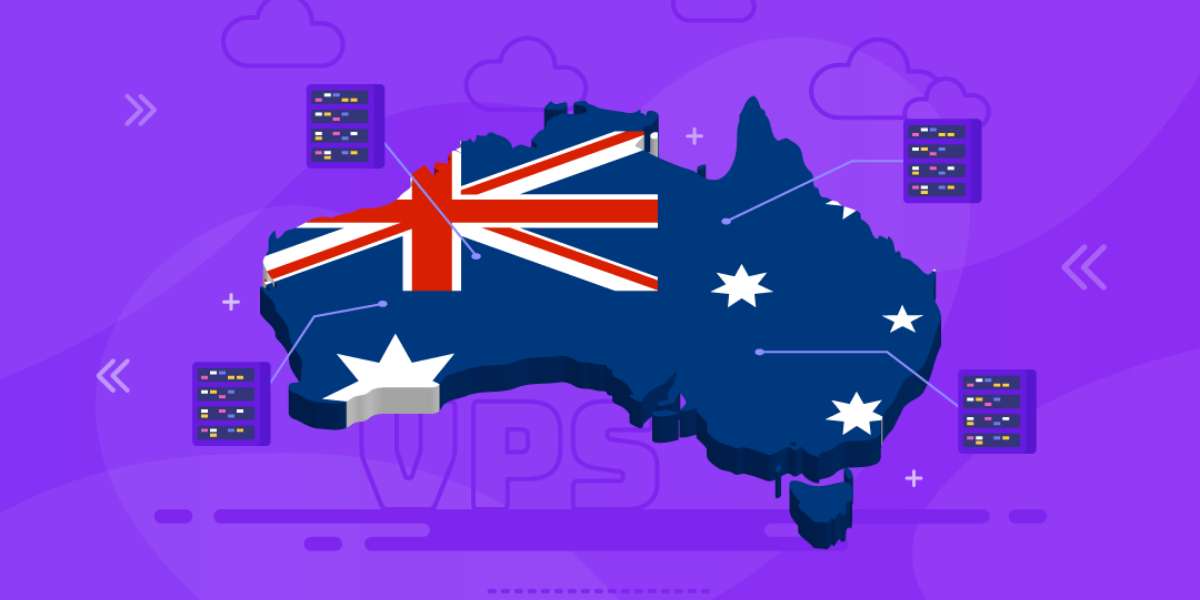
6. Consider a Strategic Host Location To Increase Your Local Authority
Depending on where your business is based, location matters. Why? Because search engines prioritise local relevance. If your backlinks come from sites that are locally hosted and trusted within your area, it signals to Google or Bing that your site is more credible in that region.
For example, if you run an Australian medical practice, having backlinks from reputable Australian websites like local medical associations, well-known health blogs, or regional news outlets will deliver far better results than relying on backlinks from overseas.
If you’re looking to take full advantage of this strategy, we can help with our locally-focused link building services. With our expertise, we can help your business secure high-quality backlinks from trusted, local websites that align perfectly with your target audience.
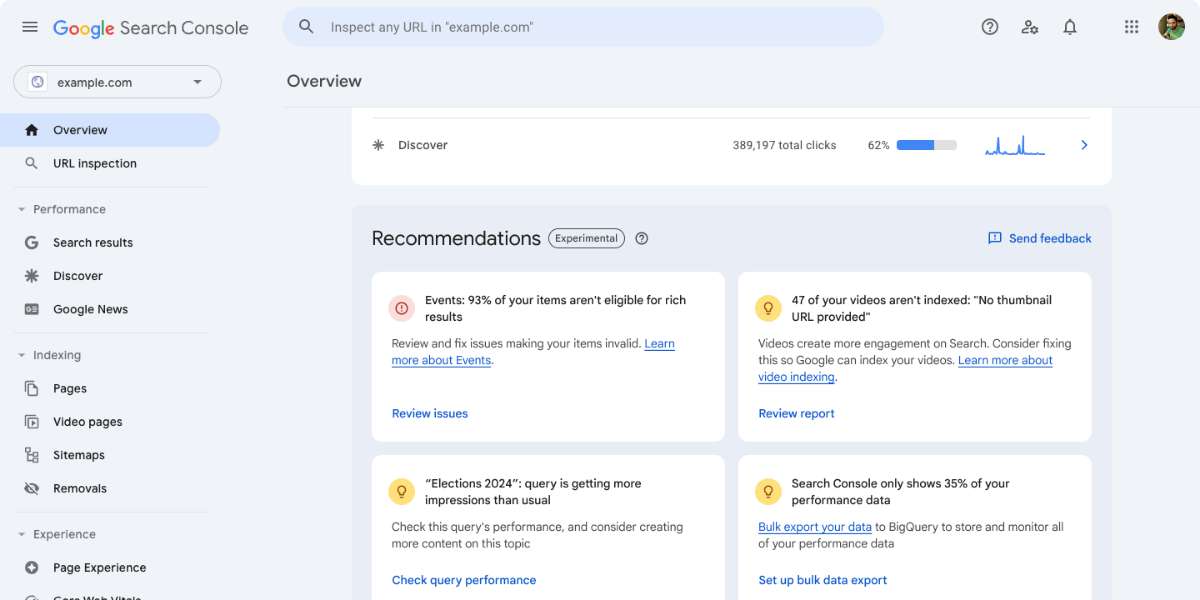
7. Use Google Search Console To Monitor Backlinks
Google Search Console helps you track your site’s performance, identify who’s linking to you, and see where you can improve. Check this tool once a month to stay on top of your link building process and make data-driven decisions.
To access Google Search Console and track your site’s performance, follow these steps:
- Step 1: Go to Google Search Console and create an account. Prepare to provide proof of ownership for your website, which may include adding a meta tag to your site, uploading an HTML file, or using your domain name provider.
- Step 2: Once your site is verified, access Search Console Insights directly from the main dashboard to get an overview of your site’s performance, clicks, impressions, and average position.
- Step 3: Understand key metrics such as clicks, average position, impressions and click-through rate.
- Step 4: Use the tool’s performance report to find out which web pages get the most clicks and impressions and to check what content resonates most with users.
- Pro Tip: Check your Google Search Console Insights at least 2x a month to stay up to date on your site’s performance and identify areas for improvement in your search engine optimization (SEO) strategy.
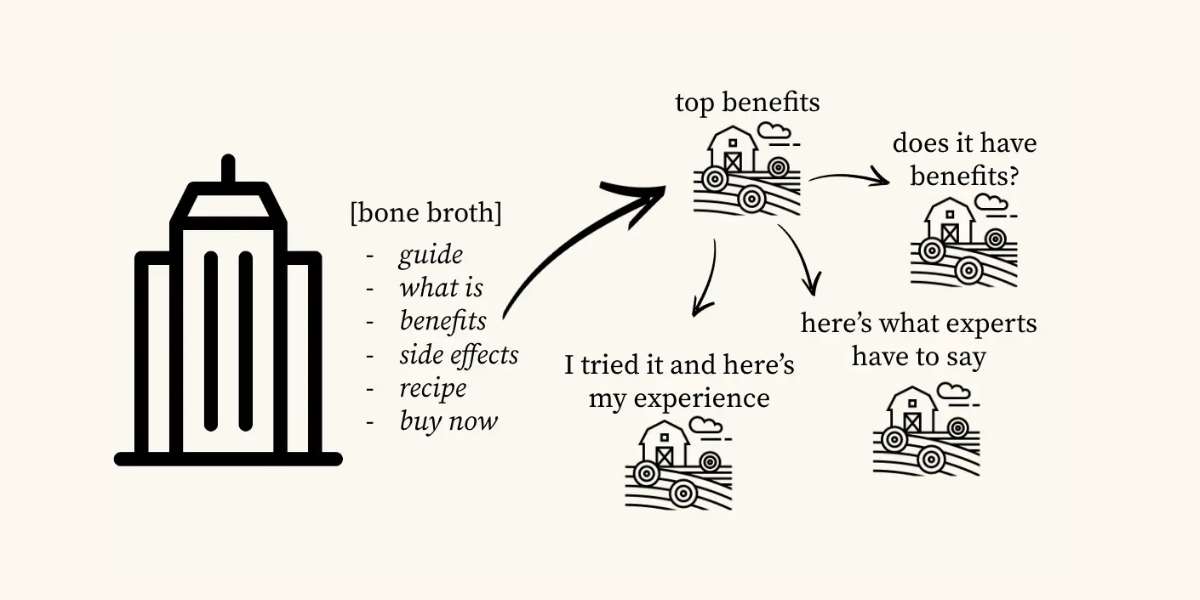
8. Use The Skyscraper Technique
The Skyscraper Technique improves existing successful content and makes it even better. Let’s say there’s a popular blog post about a topic you cover. Use the Skyscraper tactic to create a more detailed, up-to-date, or engaging version of that content.
Here’s how you do it:
- Step 1: Look for a blog post in your niche that’s doing really well. It should have a few backlinks, social shares, or traffic. Ahrefs or BuzzSumo can help you find these.
- Step 2: Once you’ve found the content, think about how you can make it better. Can you add more recent data? Include examples or visuals, or make it easier to understand?
- Step 3: After publishing your improved content, reach out to websites that are linked to the original post. Let them know that you created an updated version they can link to.
- Pro Tip: When reaching out to site owners, customise your message. Show them why your content is a worthy replacement for the old one.
For example, let’s say a med spa clinic published a high-ranking article on Masseter Botox last year. You can update it with the latest relevant application techniques and safety data to help keep clients informed. Since this is a cosmetic procedure affecting the facial structure, having up-to-date info builds trust and showcases your expertise.
By improving the content, you make it more appealing for related sites, like cosmetic surgery review sites, aesthetic treatment forums, and skincare influencers, to link to. These platforms are always looking for the latest information, and your refined article can serve as a trusted resource.

9. Engage in Guest Posting
53% of bloggers say guest posting is the most effective way to build links. Guest posting lets you write valuable SEO blog posts for other websites in your industry, and they’ll allow you to include a link back to your own site. You can use this to attract more organic traffic to your website—something 49% of businesses swear by for delivering the best ROI.
Here’s how to effectively engage in guest posting:
- Step 1: Research and select websites that align with your niche and have a strong audience base. Make sure they accept guest posts and have a good reputation.
- Step 2: Write informative and engaging articles that provide value to the host site’s readers. Make the content relevant and adhere to their content guidelines.
- Step 3: Integrate links to your own site contextually within the content. These should enhance the reader’s experience and provide additional resources.
- Step 4: Engage with the audience through comments or social media to further enhance your visibility and establish relationships with new readers.
- Step 5: Monitor referral traffic and engagement from your guest posts to refine your strategy for future postings.
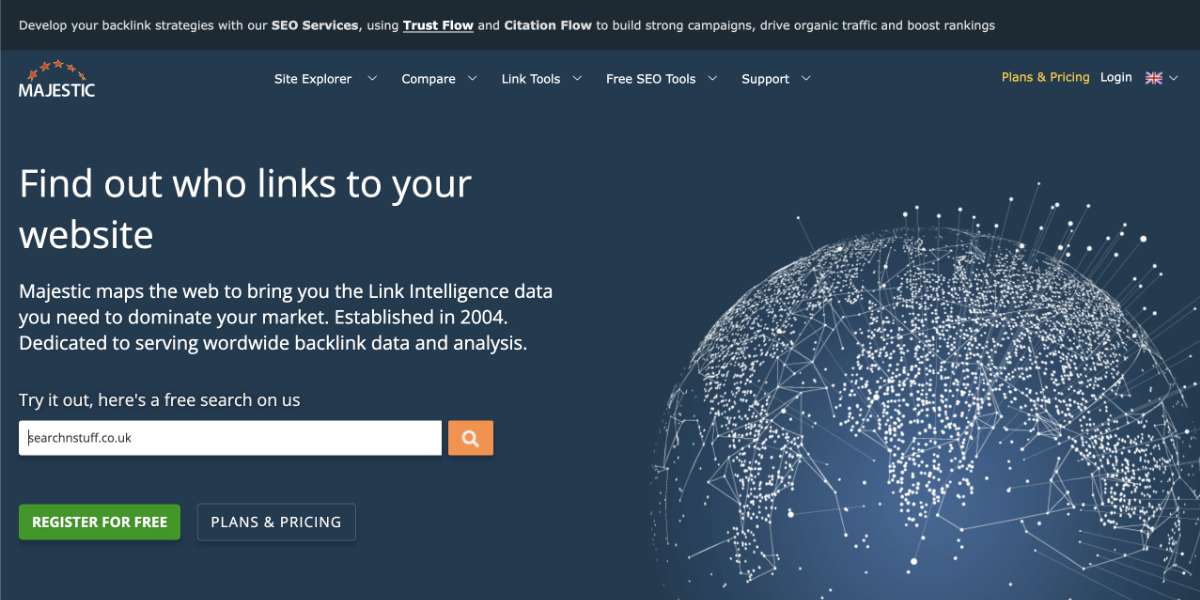
10. Check The Trust Flow
Trust Flow measures the quality of links pointing to a website. It shows how trustworthy and authoritative a site is based on the quality of backlinks. A higher Trust Flow increases your site’s authority, which can be a big factor in enhancing your search rankings.
At Digital Next, we use Trust Flow to get high-quality backlinks for our clients. To get started, sign up for Majestic SEO, which offers tools for analysing the tool. Enter your own website’s URL into Majestic’s Site Explorer to get an overview of your Trust Flow. Take note of the score and compare it to industry benchmarks.
Once you’re done, analyse the Trust Flow of competitors’ sites to understand how your site stacks up and what you might need to improve. Look at competitors with high Trust Flow and analyse their backlink profiles to identify potential link-building opportunities for your site.

Top 3 Best Link Building Tools To Use In 2024
Now that you’re well versed with our top 10 recommended ways to gain backlinks for your website, here’s the top 3 best link platforms that will enable you to rapidly scale your link building campaigns.
The top 3 best online tools for link building are:
- AHREFS – Best For In-Depth Link Insights
- SEMRush – All-In-One SEO Solution
- Responsa – Best For Outreach Activities
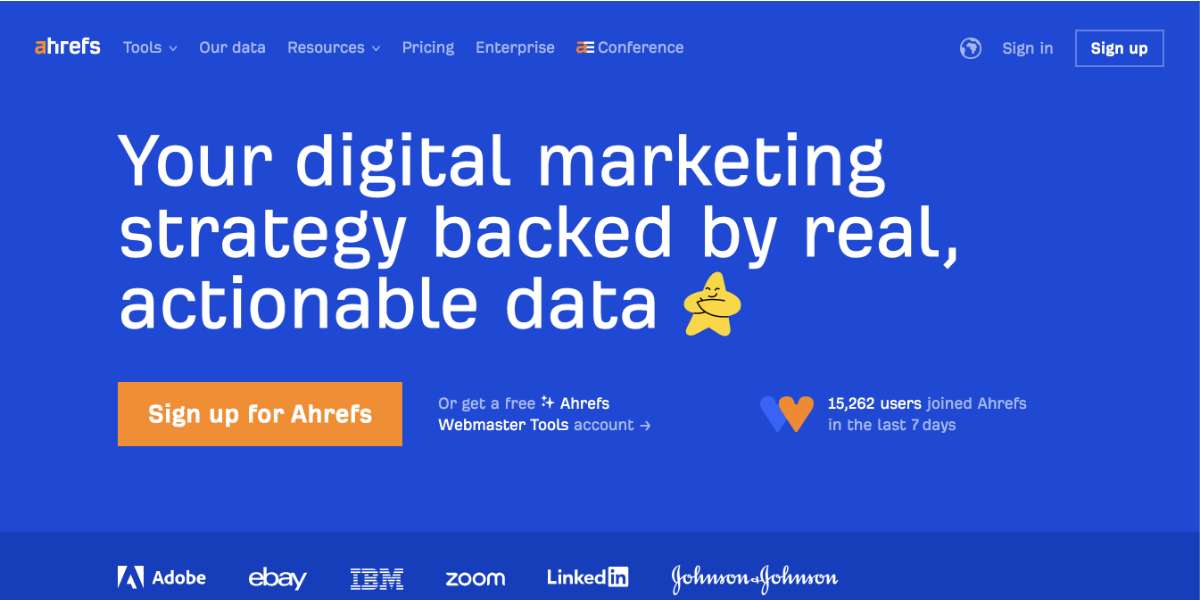
1. Ahrefs – Best for In-Depth Link Insights
Ahrefs helps you build links and lets you see who’s linking to any website. Its Site Explorer tool allows you to discover high-quality sites that link to your competitors and reach out to them for your own backlinks. Plus, its keyword research and content explorer tools help you find topics people are searching for.
Simply enter your competitor’s website into the Site Explorer to see which sites are linking to them. Target these high-quality sites for your outreach. Next, use Content Explorer to find content and see who’s linking to it. Create similar pieces and reach out to those sites for backlinks. Monitor your link-building progress to see how well your efforts are paying off.
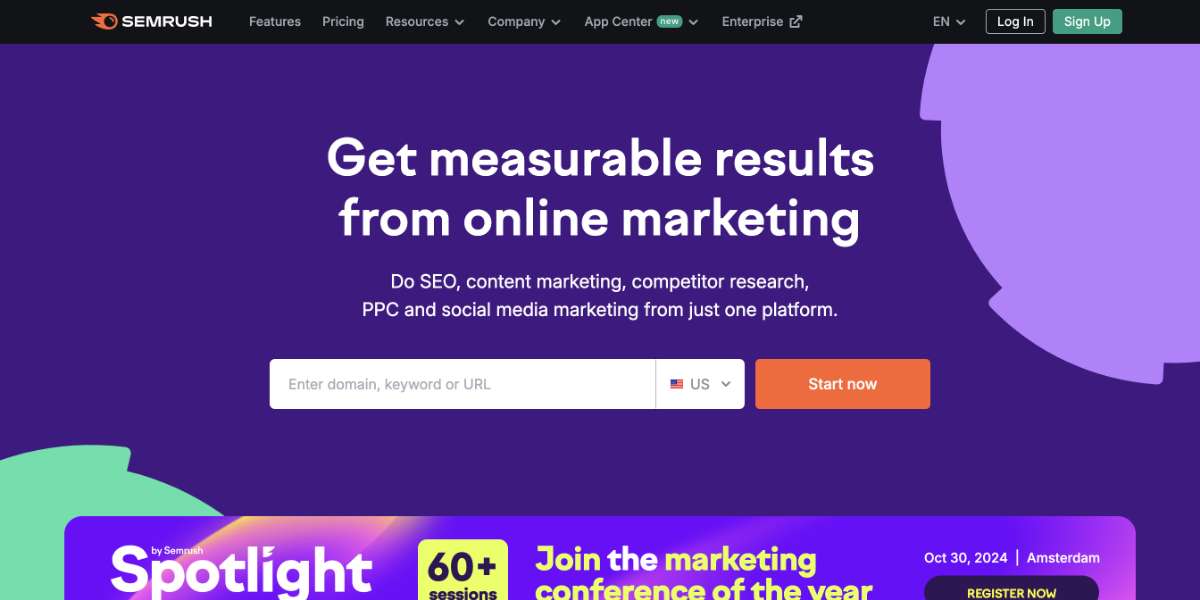
2. Semrush – Offers All-in-One SEO Solutions
Semrush lets you use its Backlink Analytics feature to find new link opportunities and manage your outreach campaigns more quickly. More than that, Semrush’s domain comparison tool lets you compare your site’s backlinks with those of your competitors.
To use Semrush, start by checking your competitor’s backlinks using the Backlink Analytics feature. Look for high-quality sites linking to them and aim to get links from those sites. Explore more link opportunities and track your outreach for an effective building links campaign. Compare your backlinks with those of your competitors and make adjustments as needed.
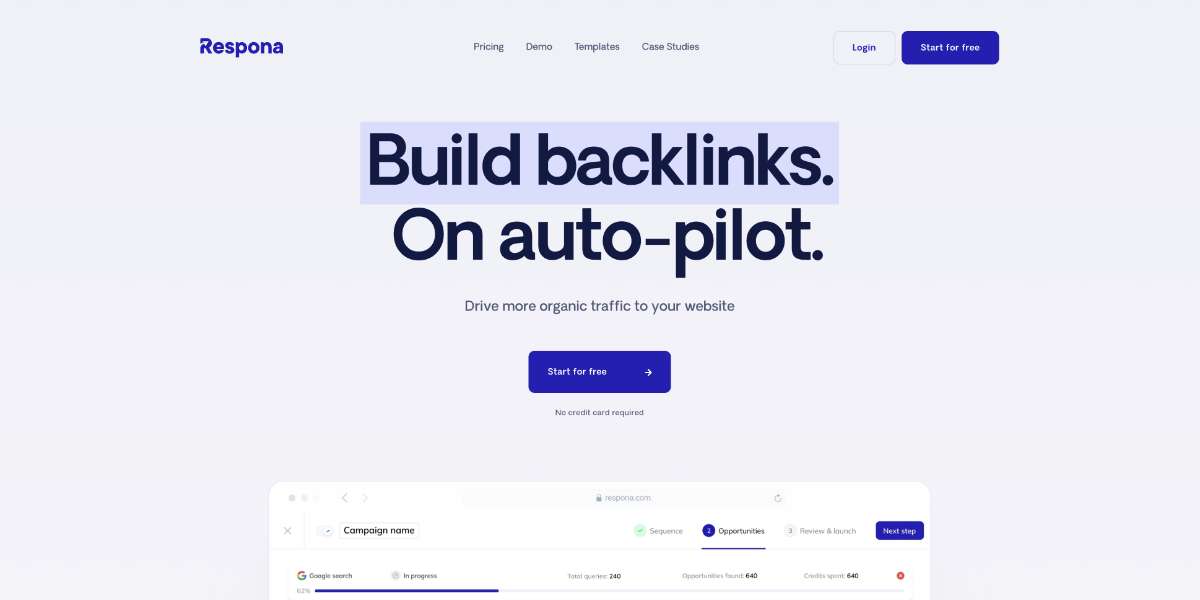
3. Respona – Best For Outreach Activities
Respona has AI features and ready-to-use templates that make link building outreach a breeze. For example, the Guest Post template lets you input your topic, and Respona gives you a list of websites that accept guest posts. With the Skyscraper Template, you can input competitor articles and instantly get a list of URLs linking to them.
Once you have your opportunities, Respona helps you find the right contact person, including their verified email and LinkedIn profile. You’ll also get AI-powered assistance to personalise your outreach emails.

Conclusion
Now it’s time to get links. Take a moment to consider which link building for SEO strategies aligns best with your goals. Do you want to boost your domain authority, analyse competitor backlinks, or fix broken links?
Reflect on your goals and choose the strategy that has the most impact on your SEO efforts. With the best approach, you can prevent lost traffic and find many opportunities for new backlinks.
Lack the skills and need expert help? Digital Next is here to do the job for you. With our advanced link prospecting and outreach automation, we provide tangible solutions to improve your link building for SEO strategy. Fill out this form to get a free consultation today.
Leave A Comment